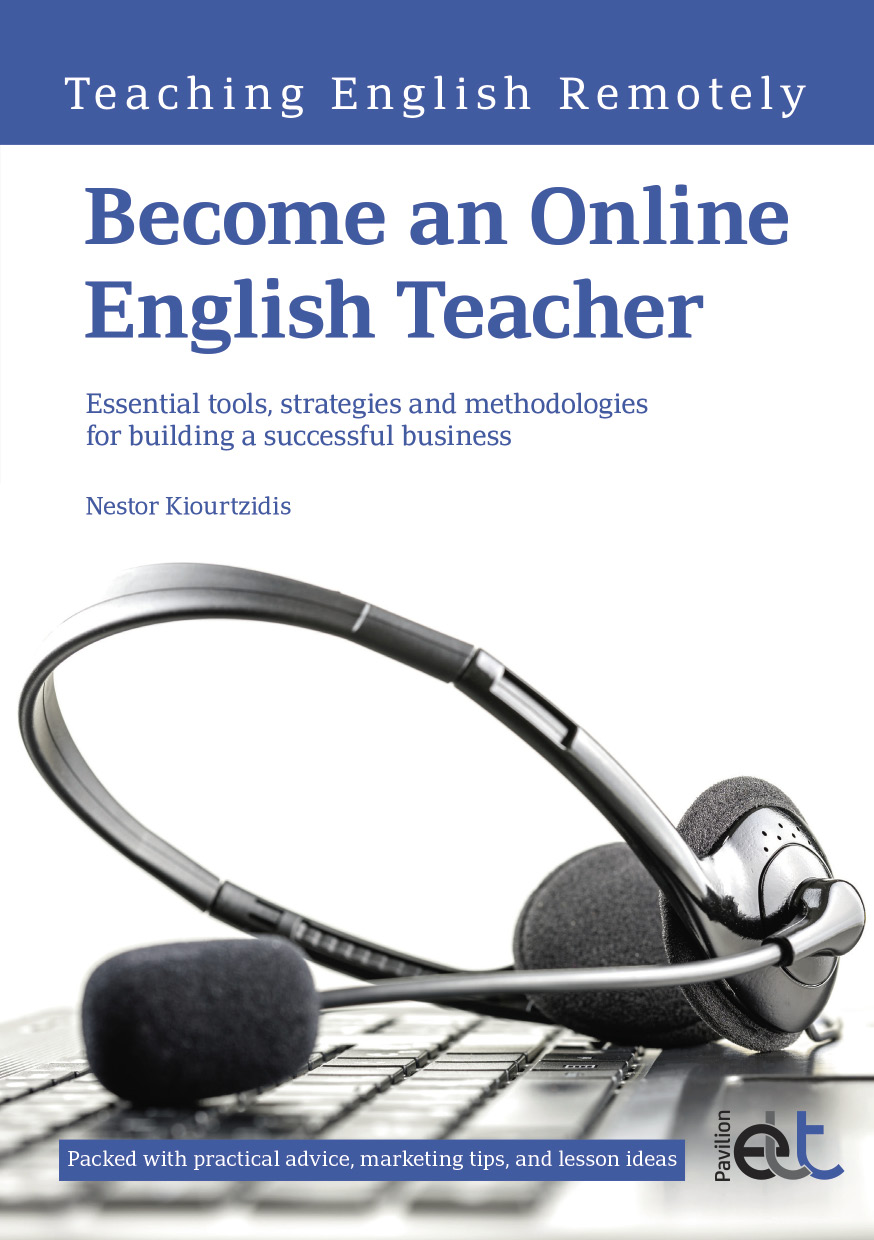Become an Online English Teacher
Become an Online English Teacher
by Nestor Kiourtzidis
Pavilion ELT 2015 and 2020
978-1-91-036677-6

Nestor Kiourtzidis, the author of this book, is a co-founder of the popular website Linguahouse, and an experienced freelance online teacher. The book was first published in 2015, but had a refresh for 2020, with the website links being checked and updated, and some changes being made to the design.
So, who is this book for? It is for anybody looking to establish a career as an online teacher of English. If you’ve been thinking about building your own online teaching business, this compact but insightful book will take you through everything you need, from finding the right tools to marketing your services.
The book is composed of seven chapters. Chapter 1 gives an overview of the ‘tools of the trade’: hardware and communication tools, as well as tools for recording, sharing and collecting information from students. I was especially interested in the (free!) online tools Kiourtzidis suggests for scheduling sessions with online students.
Chapter 2 offers pointers for anybody who wants to transition to online teaching but needs to find new students. It talks about how to create a profile on the main teaching marketplaces, and how to harness other online tools to reach students, such as blogs, online ads and forums. It also gives a brief overview of SEO (search engine optimisation), a topic about which I would actually have liked to read more. Helpfully, the end of the chapter gives a summary of the different marketing options, together with their pros and cons.
Chapter 3 is a guide to building a blog, from the more practical aspects (eg hosting services and the pros and cons of different platforms) to suggestions on writing posts.
Chapter 4 goes further into how to market yourself and your blog, from SEO on Google to social media and email marketing.
With Chapter 5, the book turns to the nuts and bolts of running your teaching business, ie ‘establishing a workflow’. It offers valuable suggestions about how to approach students initially, how to test their level and conduct an analysis of their needs. The book also talks about an aspect that might be less common in face-to-face teaching – that is, how to approach free consultations and trial lessons. It also explains how to establish terms and conditions and request payment.
Chapter 6, aptly named ‘Getting paid’, gives an overview of different payment methods (such as PayPal) for classes not run on a teacher marketplace (where payment systems are generally already in place).
The book ends with Chapter 7, which gives practical tips for running online classes, including teaching speaking – a useful section as, in my experience, conversation classes tend to be quite popular online. The chapter provides some useful links to online worksheets and lesson plans, and tips for online error correction.
Overall, this book is practical in nature and it will be a useful starting point for anybody wanting to set themselves up as an online teacher. Given the huge shift to online teaching that the world has experienced in the past few months, this book will be useful to many – and is one reason why the original edition has been updated this year, taking into account the swift and unexpected change from face-to-face teaching to teaching online that many teachers have had to deal with during the Covid-19 lockdown.
The part I liked the most was the one about marketing: this was the part that pushed me (and, I suspect, many of my teacher colleagues) outside my comfort zone! I see so many of us struggling to think of how to market our teaching skills, and finding out about practical techniques to reach students and create a following gave me a refreshing addition to my toolkit as a teacher.
I would have liked to see more advice on how to go about writing a blog post, perhaps with a sample or a few links to successful ELT blogs (of which there are many out there!).
In summary, I would recommend this book to anybody thinking about venturing into the world of online teaching. It is a realistic, practical book, laying out the pros and cons of various aspects of online teaching clearly, succinctly and effectively, so you will know what to expect and have the tools to deal with it.
Chiara Bruzzano, Leeds, UK
Comments
Write a Comment
Comment Submitted